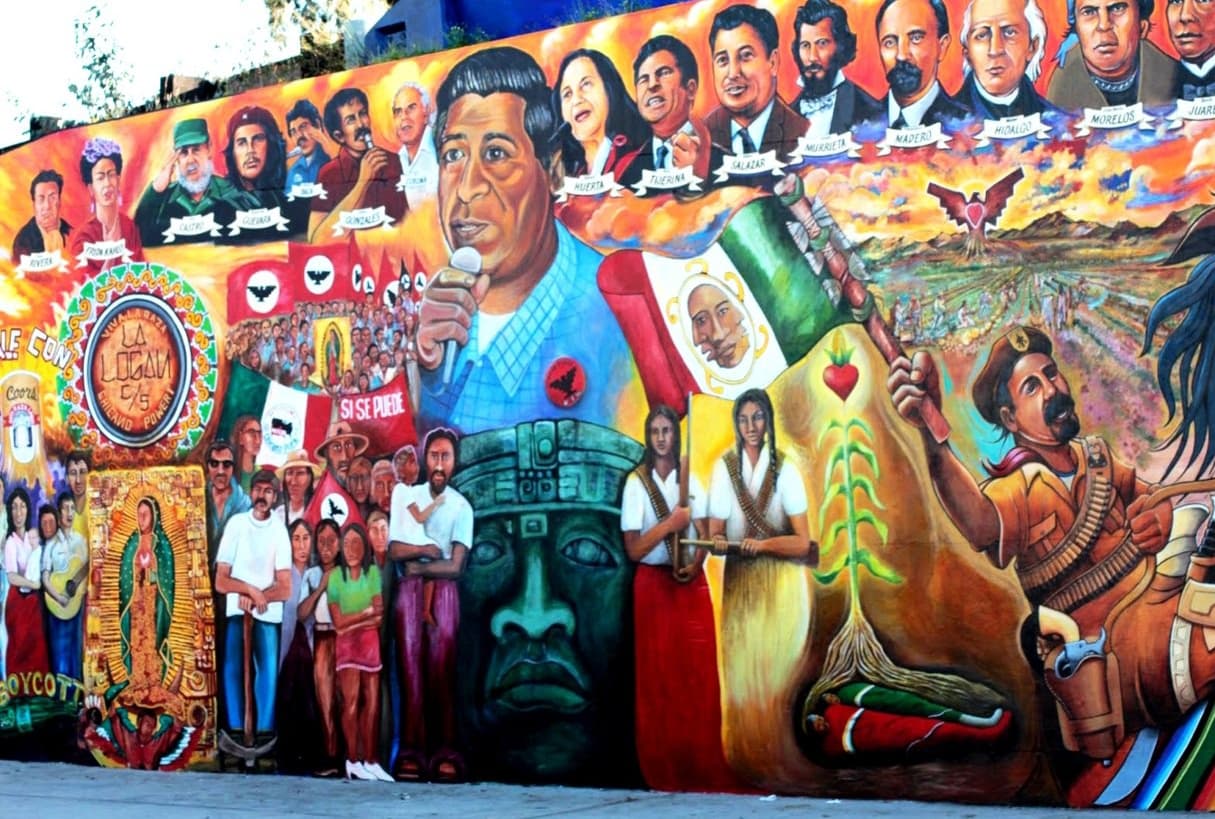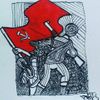No Art for Art's Sake Part 1: Art and Gentrification
"When you see how intertwined our lives are in regards to art, its impossible not to see how useful a tool it is to certain classes..."

"In the world today all culture, all literature and art belong to definite classes and are geared to definite political lines. There is in fact no such thing as art for art's sake, art that stands above classes, art that is detached from or independent of politics."- Mao Zedong
Over the past few years, it has become increasingly clear to me how much of a part media/art plays in our day to day lives most especially in the political/social/ideological "arena". I put "arena" in quotation marks because the arena is literally every sphere of human relations, to the point where there is no isolated separated arena, its actually everywhere; in our day to day lives, in the music we listen to, to the shows we watch, to the books we read, to the pieces of art we enjoy (everything from paintings, to architecture, to graphic design!).
When we think of art and media we tend to have this idea that its separated from the world, it's an "escape" to most people. We dont really tend to see our favorite shows as being political, at least not overtly so. But the more we become aware of our current political situation, it seems that it's hard to ignore how deep a role ideology plays in every piece of media we consume. And like I mentioned above it doesnt seem very obvious at first glance, after all how could a cartoon or a piece of architecture be deeply political?
"It's just a painting!" or "it's just a TV show!" is a likely response to someone dissecting a piece of media. More than likely this attitude itself obscures the underlying purpose behind whatever media we consume. I have to emphasize that it's not even necessarily a totally conscious thing, the artist/creator themselves may not have the intention of promoting one ideology over the other, it's more complex than that, it's about as complex as society is.
That's why we must see art as being a reflection of the society we live in. Every idea comes from a material reality, it comes from our surroundings and the events/situations that mold us, it comes from our interactions with the government just as it comes from our interactions with the sun. After all there's nothing without something. Everything comes from somewhere. And there's no art for art's sake.
Art is more than just a picture on a wall or a few chords with a beat or a movie with an anti-hero. Art is a tool. A tool used to convey a political point, no matter how subtle or unconsciously. It's a tool that is able to sink its roots in everywhere and is used as a supplement to real life issues. Turn on the TV and put anything on, what do you see and how can you relate it to the reality we live, in the politics we engage in? Is it trying to teach you a lesson or is it trying to throw a lesson youve been taught away?
When you see how intertwined our lives are in regards to art, its impossible not to see how useful a tool it is to certain classes, especially to those classes who are in positions of power and those classes who suffer under that power. In fact, it's more like a weapon. A weapon of class warfare. Its something that can be used to form and shape the public consciousness, it can justify and demonize, it can be a form of resistance as well as a tool of oppression. The question now, is how do we recognize it to neutralize it, and how do we use it to advance towards the liberation of the oppressed?
An example of Art as being a form of resistance and culture is, for example, in the murals of Chicano Park in San Diego, California or in Boyle Heights in Los Angeles. These murals more or less reflect the ongoing struggle of the oppressed in these areas, particularly of the Chicano people. These murals talk about the experiences of migration, police brutality, colonization, the experiences of living in the barrios, as well as portraying their liberators and heroes (Generalissimo Zapata, Che Guevara, Caesar Chavez, Frida Kahlo being prominent examples). These pieces of art are deeply engrained into the hearts of these people, they represent very powerful symbols, symbols of their ongoing struggles, their culture, and their Independence. While the art doesnt directly fight for the oppressed physically, its supplements the physical fight. It informs and develops the youth who will see it everyday.
An example of Art being used as a form of oppression in this case, is gentrification (especially in the aforementioned places). Where these pieces of Art and the areas where they are (usually lower income neighborhoods), being bought up and sold to developers who rig up bland pastel colored minimalist buildings and replace murals either with blank walls or with an even more devious tactic: the commodified commercialized version of the art that they tore down, typically a plagiarization of that art devoid of its original content, so that these gentrifiers can retain some form of "quirkiness" to these areas. It's the colonization of these cultures. Theft and destruction. And with these developments, the property values rise, and the rent gets raised up. Their art is whitewashed and they are forced out. This is an example of Art as a weapon for the ruling classes, just as the previous example is Art as a weapon for the oppressed classes.
This is an important thing to remember. We must not see art as just a picture on a wall, as just an inanimate thing somebody just dreamed up for no reason. Everything, especially Art has its purpose. And for the oppressed classes, the first step is just recognizing, in conjunction with the general struggle for liberation, that Art is a tool and a Weapon. And just as it can be used to misinform and destroy, in the right hands it can be something that inspires and informs the people to move forward towards their liberation. It is a form of knowledge, a form of education, that transcends any textbook. Art is a Weapon of Class Warfare.
